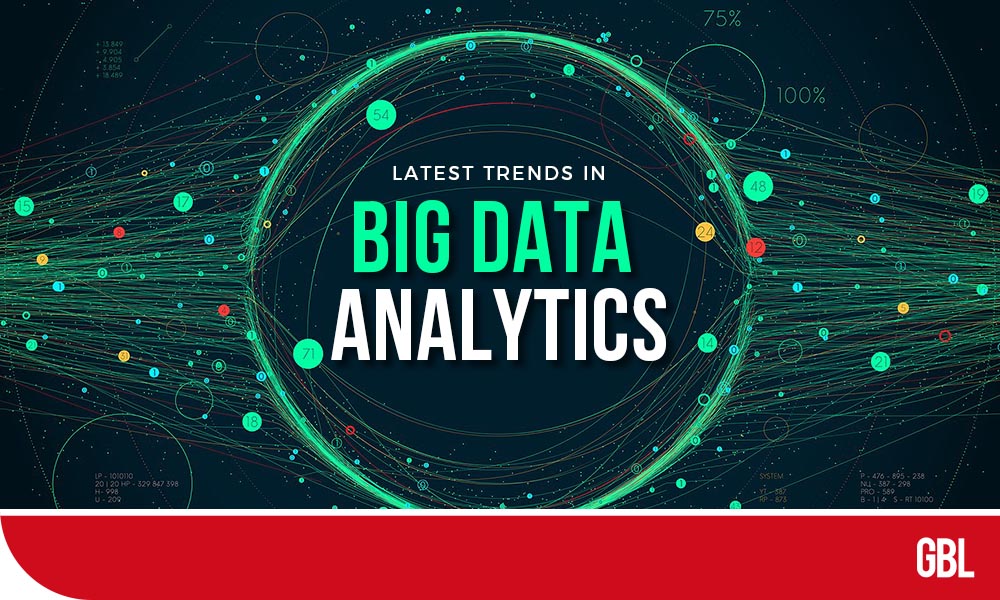Every day we produce more data in 2 days than in decades of history. Most of us do not even realize that we produce so much data just by browsing the Internet. If you want to avoid future technologies catching you off guard, pay attention to these latest trends in big data analytics and succeed!
1) Data As A Service
Traditionally, the data is stored in data stores developed to obtain by specific applications; DaaS was just the beginning when SaaS (software as a service) was widespread.
As with Software-as-a-Service applications, Data-as-a-Service (DaaS) uses cloud technology to provide users and applications with on-demand access to information without depending on where the users or applications may be.
Data as a Service is one of the latest trends in big data analytics. It will make it easier for analysts to obtain data for business review tasks and simpler for areas throughout a business or industry to share information.
2) Responsible & Smarter Artificial Intelligence
Responsible and Scalable Artificial Intelligence will enable better learning algorithms with a shorter time to market. Businesses will achieve much more from AI systems, such as formulating processes that can function efficiently. Businesses will find a way to take artificial intelligence (AI) to scale, which has been a big challenge till now.
3) Predictive Analytics
Big data analytics has always been a basic approach for companies to become a competing edge and achieve their aims. They apply essential analytics tools to prepare it and discover why specific issues arise and their causes.
Predictive methods are implemented to scrutinize current data and historical events to understand customers and recognize possible hazards and events for a corporation. Predictive analysis in big data can anticipate what may happen in the future.
This strategy is highly efficient in correcting analyzed assembled data to expect customer response. It enables organizations to define the steps they must practice by identifying a customer’s next move before they even do it.
4) Quantum Computing
Technology can take more time to process a large amount of data. Quantum computers calculate the probability of an object’s state or an event before it is measured, indicating that they can process lots of data compared to classical computers.
If we compress billions of data at once in only a few minutes, we can decrease processing duration immensely, allowing organizations to make timely decisions and attain more aspired outcomes. This process can be viable by using Quantum computing.
The experiment of quantum computers to correct functional and analytical research over many enterprises can make the industry more precise.
5) Edge Computing
Running processes and moving those processes to a local system, like any user’s system, IoT device, or server, defines Edge Processing. Edge computing brings computation to the edge of a network. It decreases the amount of long-distance connection that has to happen between a customer and a server, which makes it one of the latest trends in big data analytics.
Edge computing is an efficient way to process vast amounts of data by consuming less bandwidth usage. It boosts Data Streaming, including real-time data streaming and processing, without containing latency. It allows the devices to respond immediately. It can decrease the development cost for an organization and help the software run in remote locations.
6) Natural Language Processing
Natural Language Processing (NLP) lies inside artificial intelligence and works to expand communication between computers and humans. The NLP’sNLP’s objective is to read and decode the meaning of human language.
Natural language processing is mainly based on machine learning and is used to develop word processor applications or translating software. NLP techniques require algorithms to recognize and obtain data from each sentence by applying grammar rules.
Syntactic analysis and semantic analysis are the techniques that are used in NLP mainly. Syntactic analysis handles sentences and grammatical issues and Semantic analysis handles the meaning of the data or text.
7) Hybrid Clouds
A cloud computing system uses an on-premises private cloud and a third-party public cloud with orchestration between two interfaces. A hybrid cloud offers flexibility and numerous data deployment options by moving the processes between private and public clouds.
An organization must have a private cloud to adapt to the aspired public cloud. It has to develop a data center, including servers, LAN, storage, and load balancer.
The organization must deploy a virtualization layer/ hypervisor to support the VMs and containers and install a private cloud software layer. Software implementation allows instances to transfer information between the private and public clouds.
8) Dark Data
Dark data is the data that an organization does not use in any analytical system. The data is collected from various network operations that are not used to determine insights or for prediction.
The expansion in the amount of Dark Data can be seen as another one of the latest trends in big data analytics. Organizations might think this is incorrect data because they are waiting for an outcome. But they understand that this will be a precious thing. As the data grows daily, the industry must understand that any new data can be a security risk.
9) Data Fabric
Data fabric is an architecture and a data network collection. It provides consistent functionality across various endpoints, both on-premises and cloud environments.
To pilot digital transformation, Data Fabric simplifies and incorporates data storage across cloud and on-premises environments. It allows access and data sharing in a distributed data environment. Additionally, it offers a consistent data management framework across un-siloed storage.
10) XOps
The primary goal of XOps (data, ML, model, platform) is to achieve efficiencies and economies of scale. XOps is achieved by implementing the best practices of DevOps. Thus, ensuring efficiency, repeatability, and reusability, while decreasing technology, process replication, and allowing automation.
These innovations would empower prototypes to be scaled with flexible design and agile orchestration of governed systems.
Conclusion New technologies in Big Data Analytics are changing continuously over the years. Hence, businesses must implement the right trends to stay ahead of their competitors.
Also Read: The Latest Updates On Used Up Solar Panels









